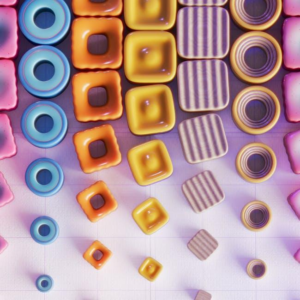The Rise of Digital Twins in Game Design and Simulation
As the gaming industry evolves, developers and designers are constantly searching for innovative ways to enhance the player experience and improve simulation accuracy. One groundbreaking technology at the forefront of this evolution is the concept of digital twins. Originally popularized in manufacturing and urban planning, digital twins are now making significant strides in game design and simulation, unlocking new potential for realism, interactivity, and performance optimization.
What Are Digital Twins?
A digital twin is a virtual representation or digital replica of a physical entity, system, or process that is continuously updated with real-time data. This dynamic model allows developers to simulate, predict, and optimize real-world behaviors or environments on digital platforms. When applied to game design, digital twins enable a more immersive and accurate replication of real-world elements within virtual worlds, allowing for enhanced gameplay mechanics and realistic simulations.
How Digital Twins Are Transforming Game Design
The integration of digital twins in game design is reshaping how games are created, tested, and experienced. Here are some core areas where digital twins are making a difference:
- Enhanced Realism: By replicating real-world physics, weather, and character behavior, digital twins create game environments that reflect the intricacies of the real world, improving immersion.
- Dynamic Player Interaction: Games can react and adapt based on player actions more realistically by leveraging continuously updated digital twins.
- Accurate Simulation: Especially in training simulations and serious games, digital twins provide a reliable, realistic environment that mimics real-life scenarios precisely.
- Efficient Testing and Debugging: Developers can simulate entire game environments, identifying bugs and performance bottlenecks before release.
Benefits of Using Digital Twins in Gaming
Implementing digital twins in game design offers many advantages that impact both developers and players:
| Benefit | Description |
|---|---|
| Real-Time Analytics | Track player behavior and environmental changes for adaptive gameplay experiences. |
| Improved Development Cycle | Faster iteration and testing reduce time-to-market and resource costs. |
| Greater Immersion | Accurate simulations increase player engagement and satisfaction. |
| Risk Reduction | In training simulations, reduces risk by offering a safe but realistic environment. |
| Customization & Personalization | Adaptive worlds allow for personalized gameplay based on real-time feedback. |
Practical Tips for Game Designers Implementing Digital Twins
For developers interested in adopting digital twins for game design or simulation, keeping the following best practices in mind will ensure an effective integration process:
- Start Small: Begin with a digital twin of a limited game environment or object to understand workflow challenges before scaling.
- Leverage IoT and Sensor Data: Use data from real-world sensors or existing models to create accurate twin replicas.
- Focus on Real-Time Data Integration: Keep the twin updated dynamically to ensure gameplay reflects current conditions and player interactions.
- Utilize Cloud Computing: Harness the power of cloud platforms to manage the computational demands of running complex digital twins.
- Collaborate with Experts: Work alongside specialists in simulation, AI, and data analysis for more robust twin systems.
Case Studies: Digital Twins in Action in Game Design
1. Racing Simulators
Popular racing games like Forza Motorsport and Gran Turismo have begun using digital twins of actual race tracks and cars. These digital twins simulate wear and tear, tire grip changes, and track temperature in real-time, offering players hyper-realistic driving experiences.
2. Military Training Simulations
Organizations use digital twins to create virtual replicas of battlefields and equipment for tactical training games. This application allows soldiers to train in an environment closely mimicking real-life conditions without physical risk.
3. Urban Planning and City-Building Games
Games like Cities: Skylines increasingly integrate urban digital twins to simulate traffic flows, population behavior, and infrastructure management with high fidelity, creating engaging management challenges.
Looking Ahead: The Future of Digital Twins in Gaming
The future of digital twins in game design is promising, driven by advancements in AI, machine learning, and edge computing. We can expect:
- Hyper-Personalized Gameplay: Digital twins will allow games to adapt in real-time to individual player behaviors, preferences, and skill levels.
- Seamless AR/VR Integration: Bridging physical and digital worlds more closely through twins can revolutionize immersive AR and VR experiences.
- Cross-Platform Continuity: Players can interact with persistent, evolving digital twins across platforms and devices.
- Collaborative Multiplayer Worlds: Multiple users engaging with the same accurate digital twin environments will enhance social gameplay.
Conclusion
The rise of digital twins in game design and simulation represents a transformative shift in how virtual worlds are created and experienced. By bridging the gap between physical reality and digital representation, digital twins empower developers to deliver richer, more immersive gameplay and realistic simulations. Whether through more realistic environmental effects in racing games or precise battlefield replicas for training, digital twins are proving invaluable. Game designers who embrace this technology today stand to redefine interactive entertainment and simulation for years to come.
If you’re a developer or gamer intrigued by the possibilities, now is the perfect time to explore how digital twins can elevate your projects and gameplay experiences. The future of gaming is doubling up – digitally!











